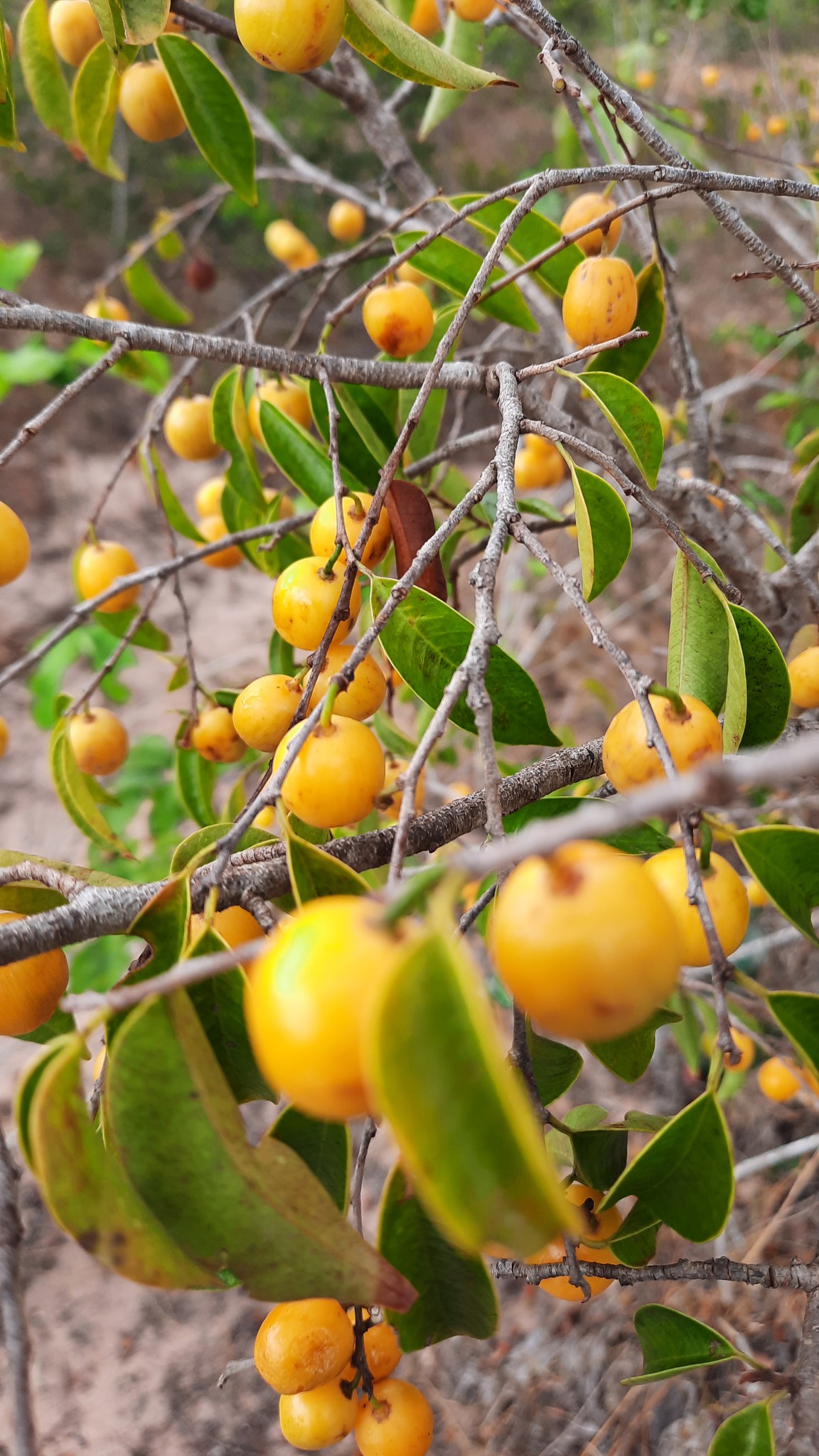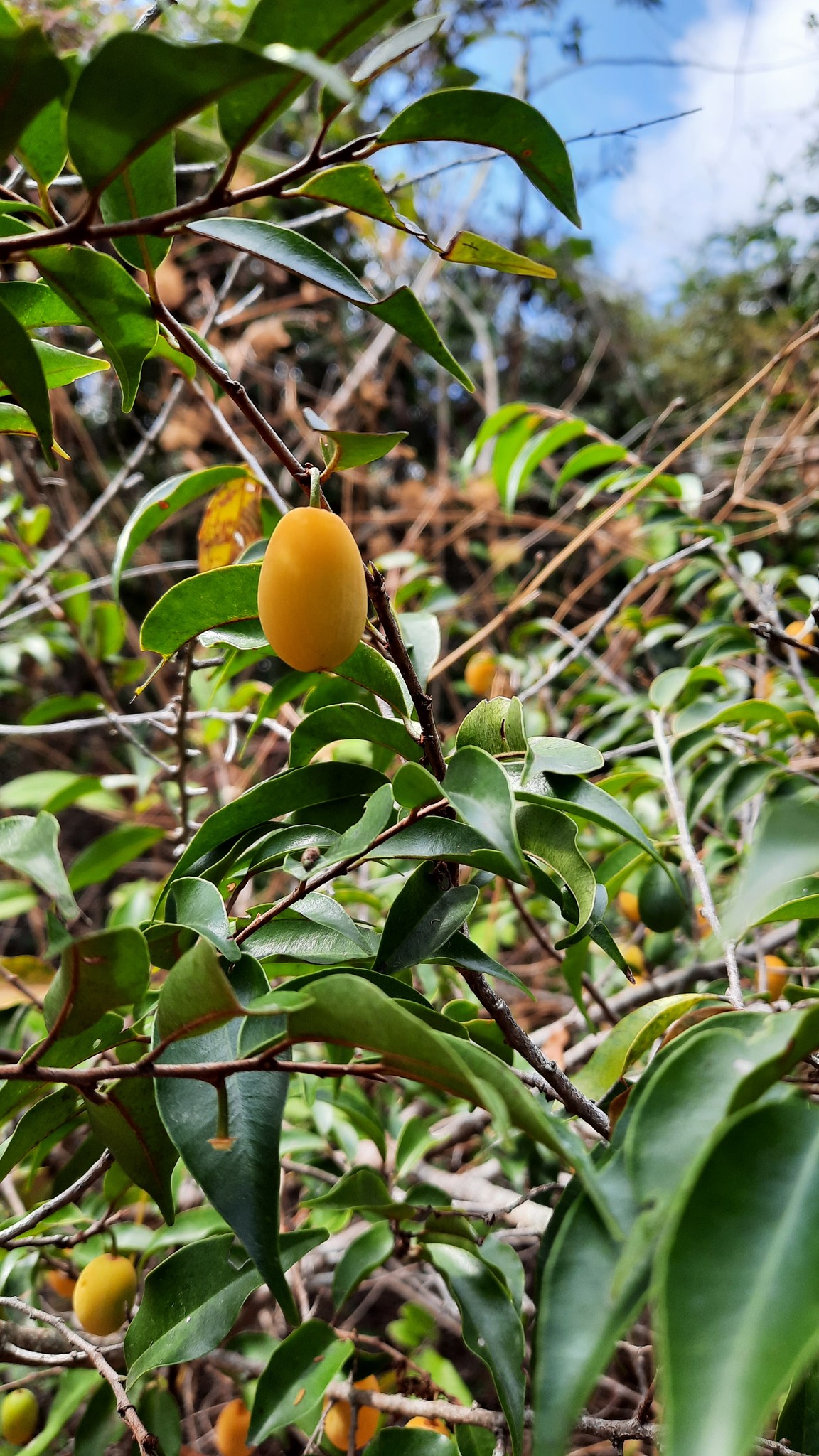Chrysophyllum arenarium - Ameixa do Nordeste - 1 germinated seed / 1 gekeimter Samen








































product information "Chrysophyllum arenarium - Ameixa do Nordeste - 1 germinated seed / 1 gekeimter Samen"
Chrysophyllum arenarium - Ameixa do Nordeste
Family / Familie: Sapotaceae
origin from / Herkunft: Brazil / Brasilien
Climate / Klima: temperate to warm (15-25C / 60-77F) / gemäßigt bis warm (15-25C / 60-77F)
Taste / Geschmack: good taste / guter Geschmack
you buy / sie kaufen: 1 germinated seed / 1 gekeimter Samen
Delivery worldwide
There are various ways to search for information about very rare plants.
You start by searching on Google, then you search in plant databases, social networks and finally in herbaria.
This plant offered here is called Ameixa do Nordeste in the north of Brazil and the scientific name is Chrysophyllum arenarium. It was discovered and identified in 1862 and has not been mentioned since that time.
The Ameixa do Nordeste is a small tree that has now been rediscovered near the beach in the city of Fortaleza in the Brazilian state of Ceara.
And this tree was full of fruit!
The fruits are orange and have a juicy, sweet and sour flesh with a note of cashew.
We believe that this Ameixa does well with several soil mixtures and also likes some sand since it was found near the beach (Restinga).
Sand in the soil also means that it doesn't like waterlogging and prefers deep pots.
This rare plant can also cope with dry periods.
Diese hier angebotene Frucht heißt im Norden Brasiliens Ameixa do Nordeste und der wissenschaftliche Name ist Chrysophyllum arenarium.
Sie wurde im Jahr 1862 entdeckt und bestimmt und seit dieser Zeit wurde sie nicht mehr erwähnt.
Die Ameixa do Nordeste ist ein kleiner Baum der jetzt in Strandnähe der Stadt Fortaleza im brasilianischen Bundesstaat Ceara wiederentdeckt wurde.
Und dieser Baum war voller Früchte!
Die Früchte sind orange und haben ein saftiges, süß-saures Fruchtfleisch mit einer Note von Cashew.
Wir glauben, dass diese Ameixa mit mehreren Erdgemischen gut zurecht kommt und auch etwas Sand mag, da sie in Strandnähe (Restinga) gefunden wurde.
Sand in der Erde bedeudet aber auch, dass sie keine Staunässe mag und tiefe Töpfe bevorzugt.
Auch mit Trockenperioden kommt diese seltene Pflanze zurecht.
